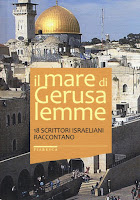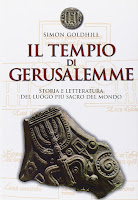Passover and Shavuot, most commonly known as the festivals that commemorate, respectively, the Exodus and the Giving of the Torah, each also have a pronounced agricultural element.
The Torah instructs that on the second day of Passover we should bring the first cutting of our barley harvest to the Holy Temple in Jerusalem as an offering to G‑d, and not to partake of that year's barley crop until that offering is made. On Shavout, we are commanded to bring the first of our wheat harvest as an offering to G‑d, and not partake of that year's wheat until this is done. Hence, the 49-day count leading from Passover to Shavuot is called "The Counting of the Omer"--a reference to the omer (a biblical measure) of barley that was brought on the first day of the count--and Shavuot is called Yom Habikkurim, "The Day of the First-Fruits Offering."
In Biblical tradition, barley is primarily animal food. Wheat is the key and ideal human food.
Who is ready for decoration Shavuot? We are !!!!
It is time to sort out some of your old glassware for this Shavuot project.
We love refurbishing items into something fresh and new… do you have an old jar, beverage glass or even glass candle holder laying around? These three miscellaneous items can be turned into Shavuot vases with just yarn and glue.
Supplies needed:
Glass containers (We used an old glass, a old candle holder )
Cotton yarn
Mod Podge
Scissors
Directions:
1. Starting at the bottom rim (or top… it doesn’t matter), glue the beginning yarn strand in place. Glue around the edge and line it with the yarn, then tuck the lose strand underneath. I glued the first three rows in place for more stability. Continue to wrap yarn around the glass. If glass curves, you will need to glue yarn in place to prevent it from sliding.
2. Once you have the desired thickness, cut the yarn and glue in place. Glue next yarn color on and keep winding around the jar.
3. Continue to add different colors until you reach the top. Just to reiterate, as the glass curves, additional glue will be needed. Along the top rim, glue the yarn until there is no more glass, cut off yarn and glue in place.
As part of this Shavuot decoration we're going to make some DIY Color Wrapped Wheat.
It’s a simple and easy project, but it’s a beautiful way to add interest and a splash of color to your Shavuot table. And don’t worry, even if you’re not hosting the holiday feast, you can still whip up a few of these to decorate your space.
For this project, you will need dried wheat stalks, embroidery floss (in any color you’d like), and a pair of scissors. Yep, that’s it.
Bunch the wheat together near the top, wrap around once with the embroidery floss, and tie a knot to hold everything in place.
Then, start to wrap the embroidery floss around the stalks. I found it easiest to spin the wheat to wrap the floss rather than spinning my hand around the wheat.
If you’re putting them in a vase like we did here, you can trim the bottom of the stems so they are all the same length.
CurtzyTM 42 cotton yarn - 43.3m
Fiskars scissors
The Torah instructs that on the second day of Passover we should bring the first cutting of our barley harvest to the Holy Temple in Jerusalem as an offering to G‑d, and not to partake of that year's barley crop until that offering is made. On Shavout, we are commanded to bring the first of our wheat harvest as an offering to G‑d, and not partake of that year's wheat until this is done. Hence, the 49-day count leading from Passover to Shavuot is called "The Counting of the Omer"--a reference to the omer (a biblical measure) of barley that was brought on the first day of the count--and Shavuot is called Yom Habikkurim, "The Day of the First-Fruits Offering."
In Biblical tradition, barley is primarily animal food. Wheat is the key and ideal human food.
Who is ready for decoration Shavuot? We are !!!!
It is time to sort out some of your old glassware for this Shavuot project.
We love refurbishing items into something fresh and new… do you have an old jar, beverage glass or even glass candle holder laying around? These three miscellaneous items can be turned into Shavuot vases with just yarn and glue.
Supplies needed:
Glass containers (We used an old glass, a old candle holder )
Cotton yarn
Mod Podge
Scissors
Directions:
1. Starting at the bottom rim (or top… it doesn’t matter), glue the beginning yarn strand in place. Glue around the edge and line it with the yarn, then tuck the lose strand underneath. I glued the first three rows in place for more stability. Continue to wrap yarn around the glass. If glass curves, you will need to glue yarn in place to prevent it from sliding.
2. Once you have the desired thickness, cut the yarn and glue in place. Glue next yarn color on and keep winding around the jar.
3. Continue to add different colors until you reach the top. Just to reiterate, as the glass curves, additional glue will be needed. Along the top rim, glue the yarn until there is no more glass, cut off yarn and glue in place.
As part of this Shavuot decoration we're going to make some DIY Color Wrapped Wheat.
It’s a simple and easy project, but it’s a beautiful way to add interest and a splash of color to your Shavuot table. And don’t worry, even if you’re not hosting the holiday feast, you can still whip up a few of these to decorate your space.
For this project, you will need dried wheat stalks, embroidery floss (in any color you’d like), and a pair of scissors. Yep, that’s it.
Bunch the wheat together near the top, wrap around once with the embroidery floss, and tie a knot to hold everything in place.
Then, start to wrap the embroidery floss around the stalks. I found it easiest to spin the wheat to wrap the floss rather than spinning my hand around the wheat.
If you’re putting them in a vase like we did here, you can trim the bottom of the stems so they are all the same length.
Shop this POST
Plaid Mod Podge Opaco 8oz / 236mlCurtzyTM 42 cotton yarn - 43.3m
Fiskars scissors






























